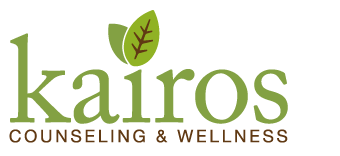Cleaning Up Your Personal Care Products
COULD THAT “CLEAN” SMELL OR LOOK THAT YOU LOVE ACTUALLY BE MUCH “DIRTIER” THAN YOU WOULD THINK?
 Most of us have a daily routine that includes at least a few personal care products such as deodorant, toothpaste, soap, shampoo, cosmetics and perhaps perfume or cologne. The question is: have you ever really looked at the ingredients you’re bathing in each day? Many personal care products, unbeknownst to consumers, are chock full of harmful chemicals that are known to cause various hormone imbalances, respiratory disorders, allergies and cancers. Every time we slather these products on the chemicals they contain get absorbed through our skin, inhaled or ingested. The interesting thing is: most of the time the side effects of these chemicals are very subtle or seemingly non-existent. Some people might occasionally notice that personal care products induce skin irritation, headache or allergies but more often these products pose a more silent danger, compounding their toxicity over long term daily exposure. In addition, many of these chemicals accumulate in our water supplies causing further hazardous exposure to humans and the rest of creatures that inhabit planet earth
Most of us have a daily routine that includes at least a few personal care products such as deodorant, toothpaste, soap, shampoo, cosmetics and perhaps perfume or cologne. The question is: have you ever really looked at the ingredients you’re bathing in each day? Many personal care products, unbeknownst to consumers, are chock full of harmful chemicals that are known to cause various hormone imbalances, respiratory disorders, allergies and cancers. Every time we slather these products on the chemicals they contain get absorbed through our skin, inhaled or ingested. The interesting thing is: most of the time the side effects of these chemicals are very subtle or seemingly non-existent. Some people might occasionally notice that personal care products induce skin irritation, headache or allergies but more often these products pose a more silent danger, compounding their toxicity over long term daily exposure. In addition, many of these chemicals accumulate in our water supplies causing further hazardous exposure to humans and the rest of creatures that inhabit planet earth
So, if these chemicals are dangerous, why are they still on the market? Well, depending on what country you live in, the standards for regulating cosmetics and personal care products vary greatly. The European Union has already banned the use of over 1000 chemicals in personal care products including all in the
discussion below. Unfortunately, in the United States, the FDA and the EPA do not typically operate on a preventative agenda and tend to favor the manufacturer over public health. In the US, with the exception of a handful of prohibited ingredients and color additives, cosmetic manufacturers can use just about any material without testing or approval from the FDA. Since 2018 there have been multiple pieces of legislature proposed in the US that would tighten regulations and help remove toxic products from cosmetics and personal care items. While none of these have been signed into law, they have caused the EPA and FDA to take more notice and to call for testing and further studies regarding the chemicals in question.
THE GOOD NEWS is that regardless of your country’s regulations regarding chemicals, YOU CAN MAKE CHANGES TODAY TO REDUCE YOUR TOXIC LOAD AND PREVENT DISEASE. There are plenty of “clean” products available as well as simple DYI recipes to make your own products AND SAVE MONEY! While it is nearly impossible to list all offending chemicals in personal care products, what follows is a summary of the most commonly used and how they are identified on packaging as well as suggestions for safer alternatives.
CHEMICALS TO AVOID IN PERSONAL CARE PRODUCTS
- FRAGRANCE (PERFUME, PARFUM, AROMA)– these are sneaky and can be found in just about
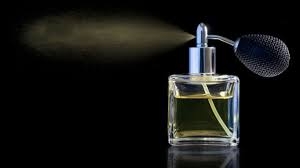 everything including soaps, detergents, shampoos, skin creams and of course perfumes. The generalized term “fragrance” was first utilized to protect proprietary perfume formulations but now often acts as a cover up for a host of chemicals including solvents, stabilizers, preservatives, dyes and UV-absorbers. Research conducted by the Campaign for Safe Cosmetics found that name brand fragrance products contained an average of 14-17 chemicals and none of them were listed on the label. Why is this a problem? Fragrances and the smorgasbord of chemicals within have been linked with a host of diseases including allergies, asthma, migraines, hormone and reproductive abnormalities and cancers3
everything including soaps, detergents, shampoos, skin creams and of course perfumes. The generalized term “fragrance” was first utilized to protect proprietary perfume formulations but now often acts as a cover up for a host of chemicals including solvents, stabilizers, preservatives, dyes and UV-absorbers. Research conducted by the Campaign for Safe Cosmetics found that name brand fragrance products contained an average of 14-17 chemicals and none of them were listed on the label. Why is this a problem? Fragrances and the smorgasbord of chemicals within have been linked with a host of diseases including allergies, asthma, migraines, hormone and reproductive abnormalities and cancers3 - PHTHALATES– are widely used to soften plastic containers and as solvents in a variety of goods from plastic packaging to cosmetics and beauty care products. Dibutyl Phthalate (DBP) is used to soften nail polish and Diethyl phthalate (DEP) is widely used in fragrances. Exposure to phthalates have been correlated with endocrine disruption in humans leading to reproductive and developmental abnormalities and neurological toxicity 7, 8.
- PARABENS– are preservatives commonly used in a wide array of personal care products, plastics and pharmaceuticals and are known endocrine (hormone) disruptors, mimicking the hormone estrogen. It is best to avoid all products including paraben (methyl-, ethyl-, propyl-, isopropyl-, butyl- and isobutylparaben) but in particular propylparaben and butylparaben have been associated with reduced fertility 17, increased odds of pre-term birth, low birth weight and an increase in breast cancer cell growth 6, 14. These will likely be buried in the list of ingredients in your products so be sure to read the entire product label.
- TRICLOSAN AND TRICLOCARBAN– TRICLOSAN is an anti-bacterial chemical that was formerly used heavily in hand sanitizers and liquid soaps in the United States until the FDA banned it
 use 2 years ago in these products. Unfortunately, it is still to be found in toothpastes, mouthwash, shaving gels and lotions and household goods. Triclosan is readily absorbed and is a known endocrine disruptor that has been linked to reduced fertility, increased miscarriage, decreased birth size, thyroid disorders, increased risk of asthma, allergies and food sensitivities as well as an increased risk of various cancers in humans TRICLOCARBAN (TCC)isan another antibacterial used in many deodorants, lotions, detergents and wipes and has been shown to negatively affect hormone, reproductive and developmental function in animals and humans 15.
use 2 years ago in these products. Unfortunately, it is still to be found in toothpastes, mouthwash, shaving gels and lotions and household goods. Triclosan is readily absorbed and is a known endocrine disruptor that has been linked to reduced fertility, increased miscarriage, decreased birth size, thyroid disorders, increased risk of asthma, allergies and food sensitivities as well as an increased risk of various cancers in humans TRICLOCARBAN (TCC)isan another antibacterial used in many deodorants, lotions, detergents and wipes and has been shown to negatively affect hormone, reproductive and developmental function in animals and humans 15. - FORMALDEHYDE & FORMALDEHYDE RELEASERS – Shampoos, conditioners, hair straighteners, soaps, lotions, false eyelash glue, baby products and a host of other personal care products often contain formaldehyde (yep, that same substance the frog from anatomy class was preserved in) in order to prevent the growth of mold and bacteria. A 2010 study showed that one fifth of personal care products contain a formaldehyde releaser such as DMDM HYDANTOIN, IMIDAZOLIDYNYL UREA, DIAZOLIDYNYL UREA, BRONOPOL AND QUATERNIUM -15 While the human body produces minute amounts of formaldehyde naturally, formaldehyde in personal care products commonly causes allergic skin reactions and is also a known human carcinogen 18.
- METALS– High levels of naturally occurring but potentially toxic metals are common in antiperspirants/deodorants, lipsticks, eye shadows and liners and hair dyes. Heavy metals
 may act directly on the skin, causing dermatitis or be absorbed into the blood and have toxic effects on various organs. ALUMINUM is often added to widely available antiperspirants/deodorants to inhibit the natural process of sweating. Aluminum has been shown to be neurotoxic at very low levels and to produce changes in the brain consistent with Alzheimer’s disease In addition, while the data is not consistent, some studies have shown a link between the use of aluminum containing antiperspirants and breast cancer 9. Lipsticks, eye makeup, talc powders, medicated shampoos and dark hair dyes often contain the highest amounts of potentially toxic metals, particularly LEAD, IRON, COPPER AND ZINC. Heavy metal toxicity has been linkedto dizziness, vomiting, diseases of the kidneys, liver, circulatory system, nervous system and autoimmune conditions 20.
may act directly on the skin, causing dermatitis or be absorbed into the blood and have toxic effects on various organs. ALUMINUM is often added to widely available antiperspirants/deodorants to inhibit the natural process of sweating. Aluminum has been shown to be neurotoxic at very low levels and to produce changes in the brain consistent with Alzheimer’s disease In addition, while the data is not consistent, some studies have shown a link between the use of aluminum containing antiperspirants and breast cancer 9. Lipsticks, eye makeup, talc powders, medicated shampoos and dark hair dyes often contain the highest amounts of potentially toxic metals, particularly LEAD, IRON, COPPER AND ZINC. Heavy metal toxicity has been linkedto dizziness, vomiting, diseases of the kidneys, liver, circulatory system, nervous system and autoimmune conditions 20. - HAIR DYES– Commonly used hair dyes often contain FORMALDEHYDE (DMDM) and PARABENS, LEAD, both discussed above, as well as several other toxic substances including COAL TAR BY PRODUCTS, AMMONIA and RESORCINOL. While study results are inconsistent, personal hair dye use has been linked to non- Hodgkins lymphoma, multiple myeloma, acute leukemia and bladder cancer in humans, with higher cancer rates associated with darker color dye pigments and among hairdressers and barbers COAL TAR BYPRODUCTS (also used in anti-dandruff shampoos) are generally identified by a FIVE DIGIT COLOR- INDEX (C.I) NUMBERor may be listed as “FD&C”or “D&C”followed by a color name and number. PARAPHENYLENEDIAMINE (PPD), AMINOPHENOL AND DIAMINOBENZENE are the most commonly used coal tar ingredients to watch out for. AMMONIA is utilized in hair dye to break down the cuticle to allow absorption of the dye. This is one of the reasons that repeated hair dye use causes the hair to become dry and brittle as the cuticle integrity becomes compromised, no longer allowing the hair to hold in moisture. Ammonia has been identified as a strong allergen and toxin to the human immune and respiratory systems 1. RESORCINOL is made from the petrochemical benzene and is used in hair dyes to help bond the dye pigment to hair (and also in acne and eczema topical medications). It has been identified as a skin irritant, as toxic to internal organs and has been shown to be an endocrine disruptor causing changes in the thyroid gland in some human case studies and in animal studies with long term usage 12.
- SODIUM LAUREL SUFATE (SLS) and POLYETHYLENE GLYCOL (PEG) – SLS is a surfactant commonly used in soaps, shampoos and toothpastes. In has been shown to be a skin, ocular and mucosal membrane irritant in humans and in animal studies, it is known to cause severe
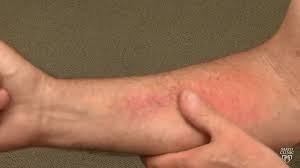 skin mutation, lesions and hair loss. In a recent study with rabbits, the skin changes caused by SLS were so severe the research scientists concluded that all products containing sodium laurel sulfate should be avoided by humans. PEG is also a surfactant and moisture carrier and has been linked with higher rates of asthma in young children (4). In addition, both PEG and SLS can be often be contaminated with both ETHYLENE OXIDE a “known human carcinogen” and 1, 4- DIOXANE a “possible carcinogen to humans” as stated by IARC (International Agency for Research on Cancer) during the manufacturing processes 2.
skin mutation, lesions and hair loss. In a recent study with rabbits, the skin changes caused by SLS were so severe the research scientists concluded that all products containing sodium laurel sulfate should be avoided by humans. PEG is also a surfactant and moisture carrier and has been linked with higher rates of asthma in young children (4). In addition, both PEG and SLS can be often be contaminated with both ETHYLENE OXIDE a “known human carcinogen” and 1, 4- DIOXANE a “possible carcinogen to humans” as stated by IARC (International Agency for Research on Cancer) during the manufacturing processes 2. - SUNSCREENS– In addition to PARABENS, PHTHALATES ANDFRAGRANCES, OXYBENZONE, OCTINOXATEand4-METHYLBENZYLIDENE-CAMPHOR (4-MBC) are commonly found UV filters utilized in sunscreen products that have been shown in animal studies to be hormone disruptors, negatively impacting reproductive and developmental health. All three chemicals are readily absorbed in humans, being found in blood, breast milk and urine andare considered “substances of high concern in relation to human risk”. Sunscreens containing oxybenzone and octinoxate have been banned in Hawaii, Key West Florida and the nation of Palau due to their lethal effects on coral reefs and marine life PABAis another UV filter that has been shown to have hormone disrupting effects in animal studies and is also best avoided 13.
TIP FOR CHOOSING SAFER PERSONAL CARE PRODUCTS
START YOUR PERSONAL CARE PRODUCT OVERHAUL BY IS READING LABELS! Begin with the products you use daily and move on to those used less frequently. As a rule of thumb, if you can’t pronounce it or it looks like a chemical it’s probably best to avoid! A GREAT TOOL TO EXPLORE THE SAFETY OF YOUR CURRENT PRODUCTS AND SEARCH FOR CLEAN ALTERNATIVES: EWG.ORG. When looking for replacement products it’s best to start at your health food store, farmers market or shop online as many drug or grocery store products are likely to contain a variety of harmful chemicals. In addition, to minimize your exposure to and use of plastics (see last month’s blog post), look for products sold in glass containers, buy in bulk or make your own!
*SCENTS: Get rid of all products with the nebulous “FRAGRANCE, PARFUM, PERFUME or AROMA” on
the label.  If you desire scents, opt for organic, therapeutic grade essential oils diluted in a food grade carrier oil such as olive or coconut oil. As a bonus, most essential oils have antibacterial and antifungal properties as well as beneficial effects on mood and stress levels. CAUTION:Essential oils are concentrated and incredibly potent, so it is never recommended that you apply them undiluted to the skin.
If you desire scents, opt for organic, therapeutic grade essential oils diluted in a food grade carrier oil such as olive or coconut oil. As a bonus, most essential oils have antibacterial and antifungal properties as well as beneficial effects on mood and stress levels. CAUTION:Essential oils are concentrated and incredibly potent, so it is never recommended that you apply them undiluted to the skin.
*MOISTURIZERS: Use pure oils such as coconut, avocado, olive, sesame or jojoba to moisturize. Oils are often best absorbed by damp skin so applying after a shower or in combination with a hydrosol is helpful. Also, be wary of antiaging creams as many contain alpha and beta hydroxy acids which have been shown to accelerate UV skin damage.
*SOAP, SHAMPOO AND CONDITIONER: Look for products that are free of parabens, phthalates, triclosan, SLS and synthetic fragrances and buy in bulk when possible. Consider switching to bar soap, shampoo and conditioner. Many varieties of chemical free soaps are available at health food stores and are 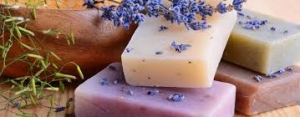 often sold without packaging or come in a paper wrapper that is easily recycled. If purchasing online, look for a company that utilizing compostable packaging and reusable shipping materials if possible. If bar conditioner isn’t quite doing the trick for you, consider switching to a hair oil.
often sold without packaging or come in a paper wrapper that is easily recycled. If purchasing online, look for a company that utilizing compostable packaging and reusable shipping materials if possible. If bar conditioner isn’t quite doing the trick for you, consider switching to a hair oil.
*DEODORANT: Stay away from antiperspirants as they often contain Aluminum and impede your body’s natural process of detoxification through sweating. In addition, look for deodorants that are free of chemicals and synthetic fragrances and use natural deodorants such as baking soda, bentonite clay, charcoal, coconut oil and magnesium… or make your own blend. There are plenty of DYI recipes out there!
*ORAL CARE: Nix the mouthwash as they often contain a host of harmful chemicals including the antibacterial Chlorhexidine, which kills beneficial bacteria in your mouth that aid the start of the digestive process and help maintain healthy teeth and gums. In toothpastes especially avoid Triclosan. Since most toothpaste tubes aren’t really recyclable, consider switching to a store- bought tooth powder or make your own. Tooth powders are often made from some of the same ingredients as deodorants with the addition of things such as calcium carbonate, xylitol and essential oils. Tooth powders help whiten teeth with natural abrasives, help keep bacteria in check that cause tooth decay and bad breath and reportedly can aid in the remineralization of tooth enamel.
*SHAVING AIDS: Choose a shaving soap or oil as they tend to contain the safest ingredients. Avoid commonly found shaving creams and aftershaves as they often contain: synthetic fragrances, oxybenzone, PEGs, parabens, DMDM hydantoin and triclosan. You can easily make your own scented shaving oil by blending a carrier oil like olive, coconut or jojoba oil with a few drops of a quality essential oil such as rosemary, cedarwood, melaleuca or lavender.
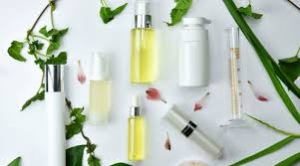 * COSMETICS: In the US, the cosmetic industry is the least regulated so do your homework and choose a
* COSMETICS: In the US, the cosmetic industry is the least regulated so do your homework and choose a
clean cosmetics line free of all the aforementioned offenders. There are plenty out there to choose from online and in health food stores. Ask to see a full disclosure of ingredients, sourcing and environmental impact before purchasing.
*SUNSCREEN: Minimize exposure during the most intense periods of sun (10 am- 4 pm) by covering up with loose layers and a hat. For any exposed areas or while swimming, use NON-NANO PARTICLE MINERAL SUNSCREENS CONTAINING ZINC OXIDE OR TITANIUMdioxide on exposed areas of skin. Non – nano zinc oxide and titanium sunscreens are regarded as safe because they sit on the surface of the skin and are not absorbed. Nano forms of the same minerals can be absorbed in small amounts and have been shown to be harmful to aquatic life. Also opt for cream or lotion – based products as harmful chemicals can be inhaled with spray sunscreens.
*HAIR DYES/STRAIGHTENERS:Especially avoid dark hair color pigments and chemical straighteners. Switch to a henna -based dye. Work with a stylist experienced in “clean” products to help maximize your natural color and texture.
*NAIL CARE: Avoid formaldehyde or formalin, toluene, triphenyl phosphate (TPP) and dibutyl phthalate (DBP) in nail polishes and products. Consider just allowing your nails to breathe and go bare. Nourish cuticles with a mix of natural oils such as jojoba, almond or coconut and beeswax instead of store – bought products.
USE YOUR VOICE AND CASH TO SPEAK FOR CHANGE!
Change tends to happen from the ground up so here are a few ways you can help build a new foundation regarding personal care product safety…Love your hairdresser or esthetician but are concerned about the products they use? Ask them to switch to non – toxic versions for your benefit and theirs! Write your favorite product line and ask for them to reformulate and remove toxic substances. Let your money speak by investing in companies that are transparent with their ingredient lists, utilize plant based, organic, raw materials grown sustainably and avoid using harmful chemicals. Write your politicians and ask them to lobby for more strict regulations on personal and home care products.
BIG PICTURE
 As in all things, the closer you can stick to natural rhythms and care products the lower your toxic load will be and the better your health. Also keep in mind that your external state reflects what’s happening internally. In other words, chronic dry, flaky skin or scalp, eczema, brittle nails or bad breath could be helpful warning signs inviting you to address an internal imbalance instead of just treating the symptoms. As you reflect on the products you use, what external symptom(s) may be trying to teach you something about your internal condition? What tools do you already have to heal and what tools or support do you need? In your journey to address imbalances, never underestimate the power of fresh, plant – based foods, clean water, restorative movement, mindful breaks, connection with community and purposeful work to heal. If you need support in the process, give us a ring! We’d be happy to set up an appointment to help you along the way.
As in all things, the closer you can stick to natural rhythms and care products the lower your toxic load will be and the better your health. Also keep in mind that your external state reflects what’s happening internally. In other words, chronic dry, flaky skin or scalp, eczema, brittle nails or bad breath could be helpful warning signs inviting you to address an internal imbalance instead of just treating the symptoms. As you reflect on the products you use, what external symptom(s) may be trying to teach you something about your internal condition? What tools do you already have to heal and what tools or support do you need? In your journey to address imbalances, never underestimate the power of fresh, plant – based foods, clean water, restorative movement, mindful breaks, connection with community and purposeful work to heal. If you need support in the process, give us a ring! We’d be happy to set up an appointment to help you along the way.
REFERENCES
1.AOEC (Association of Occupational and Environmental Clinics). 2009. AEOC exposures codes and asthmagen designation.
2. Bondi, C. A., Marks, J. L., Wroblewski, L. B., Raatikainen, H. S., Lenox, S. R., & Gebhardt, K. E. (2015). Human and environmental toxicity of sodium lauryl sulfate (SLS): evidence for safe use in household cleaning products. Environmental health insights, 9, EHI-S31765.
3. Bridges, B. (2002). Fragrance: emerging health and environmental concerns. Flavour and fragrance journal, 17(5), 361-371.
4. Choi, H., Schmidbauer, N., Sundell, J., Hasselgren, M., Spengler, J., & Bornehag, C. G. (2010). Common household chemicals and the allergy risks in pre-school age children. PloS one, 5(10), e13423.
5. De Groot, A. C., & Veenstra, M. (2010). Formaldehyde‐releasers in cosmetics in the USA and in Europe. Contact Dermatitis, 62(4), 221-224.
6. Geer LA, Pycke BFG, Gee Waxenbaum J, Sherer DM, Abulafia O, Halden RU. Association of birth outcomes with fetal exposure to parabens, triclosan and triclocarban in an immigrant population in Brooklyn, New York. J Hazard Mater 323(Pt A):177-183.
7. Greenspan, L. C., & Lee, M. M. (2018). Endocrine disrupters and pubertal timing. Current opinion in endocrinology, diabetes, and obesity, 25(1), 49-54.
8. Katsikantami, Ioanna, Stavros Sifakis, Manolis N. Tzatzarakis, Elena Vakonaki, Olga-Ioanna Kalantzi, Aristidis M. Tsatsakis, and Apostolos K. Rizos. “A global assessment of phthalates burden and related links to health effects.” Environment international97 (2016): 212-236.
9. Klotz, K., Weistenhöfer, W., Neff, F., Hartwig, A., van Thriel, C., & Drexler, H. (2017). The health effects of aluminum exposure. Deutsches Ärzteblatt International, 114(39), 653
10. Kotob, M., Mahmoud, A. Z., & Nafady, A. (2015). PATHOLOGICAL STUDIES ON THE EFFECT OF SODIUM LAURYL SULFATE ON SKIN OF RABBITS. In XVII INTERNATIONAL CONGRESS ON ANIMAL HYGIENE 2015(p. 190).
11. Krause, M., Klit, A., Blomberg Jensen, M., Søeborg, T., Frederiksen, H., Schlumpf, M., … & Drzewiecki, K. T. (2012). Sunscreens: are they beneficial for health? An overview of endocrine disrupting properties of UV‐filters. International journal of andrology, 35(3), 424-436.
12. Lynch, B. S., Delzell, E. S., & Bechtel, D. H. (2002). Toxicology review and risk assessment of resorcinol: thyroid effects. Regulatory toxicology and pharmacology, 36(2), 198-210.
13. Ozáez, I., Martínez-Guitarte, J. L., & Morcillo, G. (2013). Effects of in vivo exposure to UV filters (4-MBC, OMC, BP-3, 4-HB, OC, OD-PABA) on endocrine signaling genes in the insect Chironomus riparius. Science of the total environment, 456, 120-126.
14. Pan S, Yuan C, Tagmount A, et al. 2015. Parabens and Human Epidermal Growth Factor Receptor Ligand Cross-Talk in Breast Cancer Cells. Environ Health Perspect 124(5):563–569.
15. Rochester, J. R., Bolden, A. L., Pelch, K. E., & Kwiatkowski, C. F. (2017). Potential developmental and reproductive impacts of triclocarban: a scoping review. Journal of toxicology, 2017.
16. Rollison, D. E., Helzlsouer, K. J., & Pinney, S. M. (2006). Personal hair dye use and cancer: a systematic literature review and evaluation of exposure assessment in studies published since 1992. Journal of Toxicology and Environmental Health, Part B, 9(5), 413-439.
17. Smith, K. W., Souter, I., Dimitriadis, I., Ehrlich, S., Williams, P. L., Calafat, A. M., & Hauser, R. (2013). Urinary paraben concentrations and ovarian aging among women from a fertility center. Environmental health perspectives, 121(11-12), 1299-1305.
18. Swenberg, J. A., Moeller, B. C., Lu, K., Rager, J. E., Fry, R. C., & Starr, T. B. (2013). Formaldehyde carcinogenicity research: 30 years and counting for mode of action, epidemiology, and cancer risk assessment. Toxicologic pathology, 41(2), 181-189.
19. Tomljenovic, L. (2011). Aluminum and Alzheimer’s disease: after a century of controversy, is there a plausible link? Journal of Alzheimer’s Disease, 23(4), 567-598.
20. Ullah, H., Noreen, S., Rehman, A., Waseem, A., Zubair, S., Adnan, M., & Ahmad, I. (2017). Comparative study of heavy metals content in cosmetic products of different countries marketed in Khyber Pakhtunkhwa, Pakistan. Arabian Journal of Chemistry, 10(1), 10-18.
21. Weatherly, L. M., & Gosse, J. A. (2017). Triclosan exposure, transformation, and human health effects. Journal of Toxicology and Environmental Health, Part B, 20(8), 447-469.
